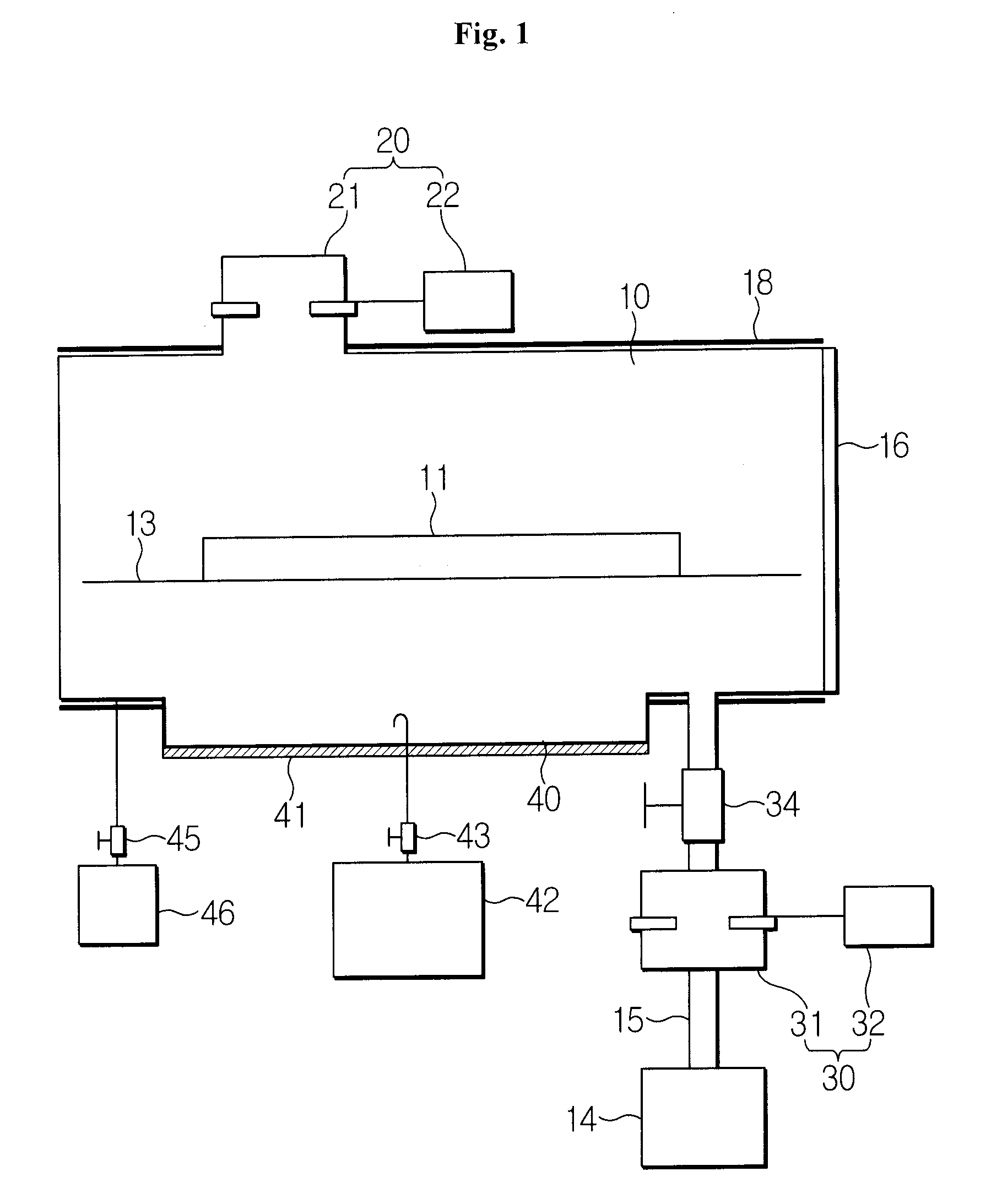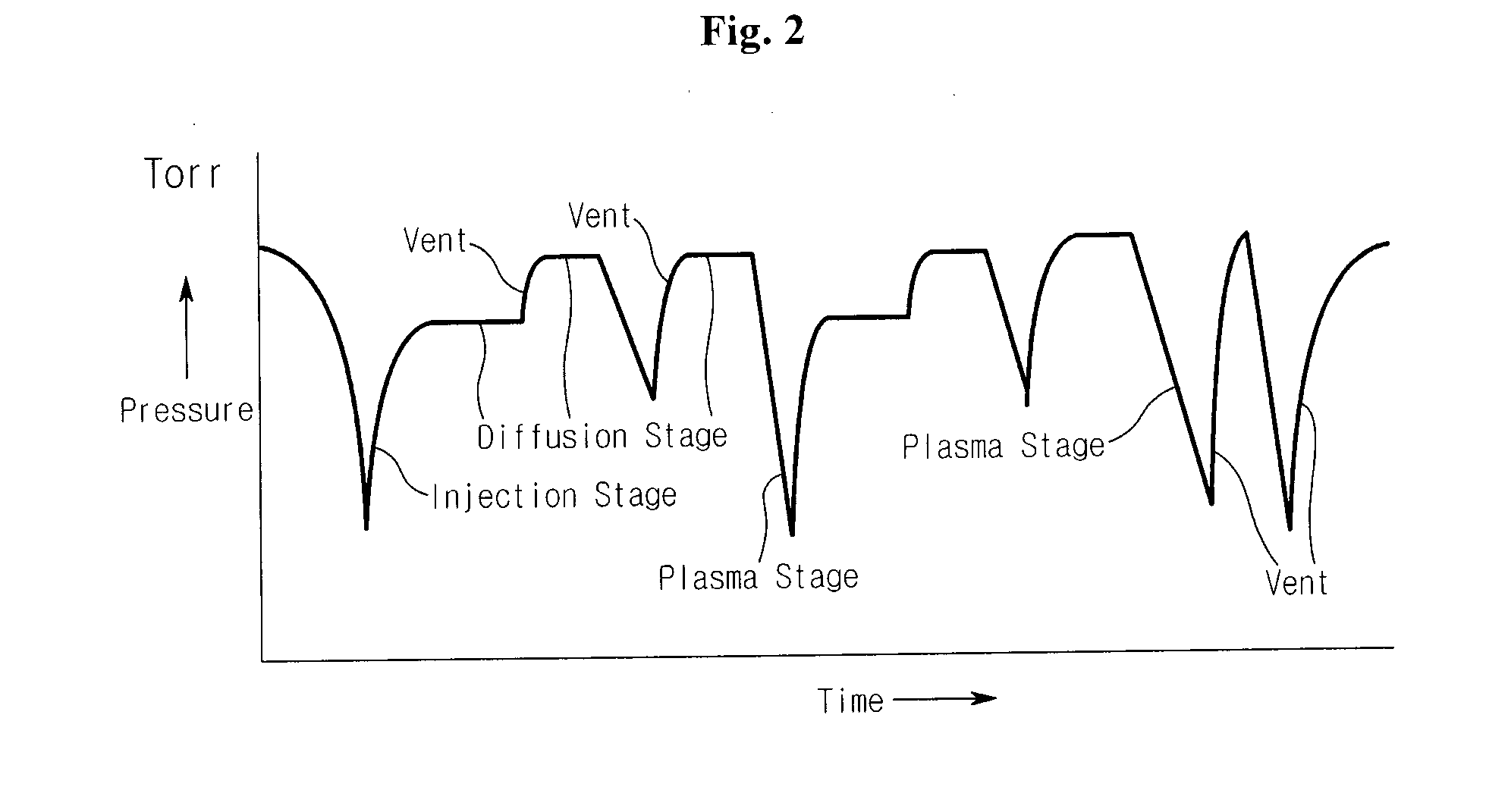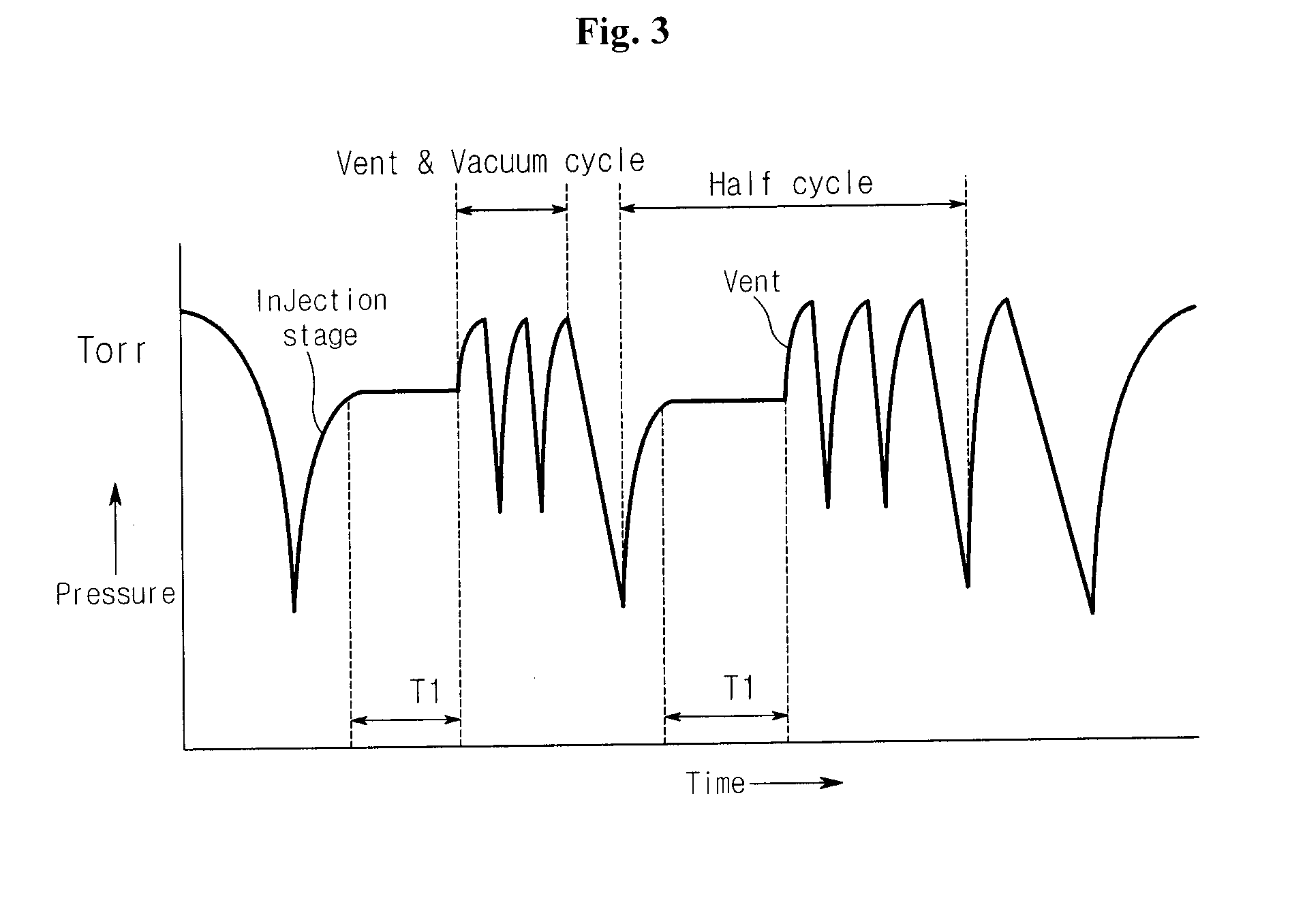Hydrogen peroxide vapor sterilizer and sterilizing methods using the same
- Summary
- Abstract
- Description
- Claims
- Application Information
AI Technical Summary
Benefits of technology
Problems solved by technology
Method used
Image
Examples
example 1
[0062]Sterilization effects were compared between a conventional method in which the diffusion of hydrogen peroxide is conducted alone, and the method of the present invention wherein the diffusion of hydrogen peroxide is conducted in combination with an increase in pressure (air ventilation), and the results are given in Table 1, below.
[0063]For a sterilization test, a BI (Biological Indicator), manufactured by A Company of the U.S.A., was used. “Bacillus Stearothermophilus” [Spore NO. 2.04×10n, n=6] served as a test microbe. The BI was applied to lumens fabricated in various dimensions, after which they were subjected to sterilization according to the methods. BI samples taken from the lumens were incubated for 48-72 hours in the same incubator and were measured for their color changes. For each case, the test was repeated 10 times and the number of satisfactory sterilizations (no growth of the microbe) was counted.
TABLE 1(unit: mm)Sterilizing Process(H2O2 Injection)Φ2x1000Φ2x2000...
PUM
 Login to View More
Login to View More Abstract
Description
Claims
Application Information
 Login to View More
Login to View More - R&D
- Intellectual Property
- Life Sciences
- Materials
- Tech Scout
- Unparalleled Data Quality
- Higher Quality Content
- 60% Fewer Hallucinations
Browse by: Latest US Patents, China's latest patents, Technical Efficacy Thesaurus, Application Domain, Technology Topic, Popular Technical Reports.
© 2025 PatSnap. All rights reserved.Legal|Privacy policy|Modern Slavery Act Transparency Statement|Sitemap|About US| Contact US: help@patsnap.com



